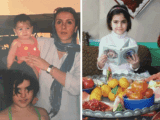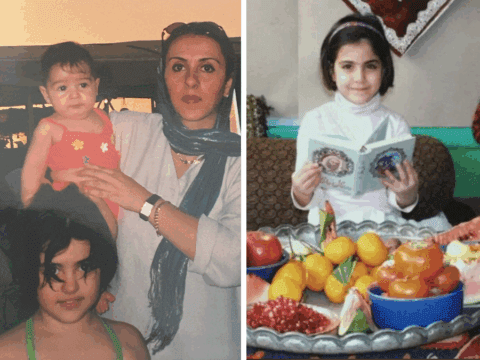Melissa Bailey vividly recalls Aug. 9, 2017. It was a hot, clear day when she went out to her local convenience store in downtown Hamilton. Bailey, who was 34 at the time, had left an abusive relationship with a drug addict months earlier, then learned she was pregnant with his child. Out of work and soon to be a single mom, she became a dealer to support herself. “I took the easy way out,” she says now.
While she never touched her own stash, she did a brisk business, selling heroin to a number of contacts she had made through her ex-boyfriend. She was good at it, too, bringing in a solid income of several thousand dollars a month. She had an entire room filled with clothes and shoes.
You may unsubscribe from any of our newsletters at any time.
On that day in August, Bailey thought she was about to make just another sale. When she arrived at the store, she met up with a woman and sold her a gram of “popcorn” — heroin laced with fentanyl. The customer turned out to be an undercover officer and arrested Bailey on the spot.
As Bailey stood in court the next day facing drug trafficking charges, her mother, Sue, sat and listened, tears rolling down her face. “How did she become this?” she remembers thinking about her intelligent daughter, who had once been a straight-A student. She watched officers escort Bailey out of court, where she was transported to the Hamilton-Wentworth Detention Centre, a provincial facility, to await a bail hearing.
With that, Bailey joined a fast-growing population in Canadian corrections: female prisoners. Women still make up the minority of offenders at about 16 percent. But over the past decade, the number of federally sentenced women has increased by nearly 30 percent — and at least two-thirds of them are mothers. Considering this, it’s hard not to wonder: when mom is in jail, what becomes of her kids?
At one time, the options were few. Children of female inmates would live with their other parent (if that person was around), move in with relatives (if they’d take them) or join the foster care system. Each of these options created its own barriers to maintaining ties between mother and child.
“The cut-off for women from their family was just profound,” says Patrice Butts, a social worker in Kitchener, Ont. “We know women are the main caregivers for their kids. When men [went] to prison, they [usually] had the mother of their child to take care of their kids. Often, when women go to prison, they don’t have that.”
Enter the Institutional Mother-Child Program — available to female inmates in Canada who are serving time at a federal penitentiary. Butts is the mother-child program co-ordinator at Kitchener’s Grand Valley Institution for Women. She works with community agencies and the prison itself to keep women and their children connected, where possible.
There are co-ordinators like Butts at every federal facility, figuring out what that connection looks like. Essentially, it means supporting the bond between mother and child and building a routine that helps them transition as seamlessly as possible from prison to the community, when mom eventually gets out. Arrangements can include children living with their mother full time in prison up to the age of five and part time until the age of seven.
“My bull’s-eye has been to push for kids to have access to mom,” Butts says of her work. “That is a really important component for us as a society from a physical health perspective. The most traumatizing occurrence for kids is the disruption of attachment.”

“It was horrible,” says Bailey of her time in the provincial detention centre, which is run by Ontario’s Ministry of Community Safety and Correctional Services. At more than six months pregnant, she remembers sharing a small dorm room with around 10 other women. She spent her days sleeping on a bunk bed and worrying about what would happen to her and her baby. “Nobody cares that you’re pregnant. The last meal I got there was at 4:15 p.m. … I needed to be eating more. It wasn’t easy, that’s for sure.”
She knew if she didn’t get out of there soon, it would get much rougher. Unlike a federal penitentiary, which houses offenders who are serving a long sentence, detention centres are holding cells for those awaiting trial or serving sentences of less than two years. They generally have little programming for inmates compared to federal penitentiaries.
Women who go into labour while in provincial jails are treated like any other prisoner needing to go to the hospital. The priority is security of the public and the inmate. Depending on the risk, inmates can be restrained while under medical care. As someone who had not yet been sentenced, Bailey feared she would be considered high risk and cuffed or shackled to the bed while in labour. Once the baby was born, social services could take him or her away to a nearby foster home.
Bailey asked her mother to post bail but, difficult as it was, Sue refused. “I had always been there for her,” says Sue. “I told Melissa many years ago, ‘You ever end up in jail living this crazy life, I’m not bailing you out.’ Because I have bailed her out of so many other things. . . . Sticking to that was the hardest thing I’ve ever done.”
But there was a silver lining to Bailey’s time in provincial jail. That’s where she heard from a social worker about the mother-child program. So Bailey pleaded out. Rather than continue in detention waiting for court dates and a trial, she accepted a deal, taking full responsibility for trafficking (though she says she was working with others). This both shortened her sentence and got her to a federal penitentiary faster, where she could access the program. “I didn’t want to have a baby [in the detention centre],” she says. “It would have just been a nightmare.”
The mother-child program was born of a federal task force that investigated women’s corrections in 1989. A team of researchers surveyed federally sentenced women in the country and noted several barriers between them and their families, who are an important source of support, especially after release. “There is nothing harder than facing kids who don’t know you,” one inmate told the researchers. “Doing time is easy compared to that.”
Back then, the only federal penitentiary for women was in Kingston, Ont., so kids staying with relatives would often live too far away for regular visits. If they were taken into nearby foster care, access to mom depended on whether their caregivers could or would arrange visits or communication — a situation that was very stressful for both mother and child. The Saskatchewan NDP Status of Women critic at the time, Louise Simard, called the separation “a human tragedy” that “punishes both the child and the mother.”
Studies have shown that children of incarcerated parents are at increased risk of depression, shame, isolation, confusion, abandonment and anger. As they get older, these kids may also engage in substance use, become aggressive or seek out “pseudo-families” by turning to older delinquent peers or gangs.
To help ease the separation, the task force’s final report, Creating Choices, put forth a set of recommendations, such as adding regional facilities so moms could be closer to their families, making visits logistically easier. The report also suggested better access to education and counselling services and offering a residency program so pregnant mothers can have their babies live with them in prison.
“The most important aspect of this program is the opportunity for mothers and children to live together based on the rights and needs of the children, mothers and significant others in each individual case,” concluded the task force, laying the groundwork for the mother-child program, which launched in 1997.
Not surprisingly, this idea of raising children in prison took some getting used to. When the program first crossed Rodney Miller’s desk, he worked for the Children’s Aid Society, and part of his job was to oversee community partnerships like the mother-child program. His initial thought was, “I don’t think so. To have a child in a prison environment? How does that work? How do we ensure the child’s safety?”
But Miller, who is now the chief social worker at the Waterloo Catholic District School Board, has warmed to the program. A big selling point was the strict criteria an incarcerated mother has to meet to ensure the child’s safety. She must not be serving time for a violent offence, for example, and cannot have been cited for abusing or neglecting children. She must also be housed in a minimum- or medium-security unit, which means she is either a lower-risk offender or has spent time in a maximum-security facility and earned her way out with good behaviour.
Since the program’s inception 30 years ago, only 75 incarcerated women have had their children reside with them in prison. For moms who don’t make the cut, program staff will try to find other ways to keep them connected with their kids, such as by pumping and storing breast milk, which is then transported to their babies.
“Providing that bonding, that attachment for that child and the opportunity to be with their mother, or to have regular visits and a relationship with [their] mother — especially if the plan is that mom will get out and parent again . . . is important,” explains Miller.

Bailey was in her third trimester when she arrived at Grand Valley in October 2017, and she immediately applied to have her son stay with her after he was born. She attended counselling sessions and stayed out of trouble until she qualified for a minimum-security designation.
“I worked so hard,” says Bailey. “I did so much programming and working on myself to get him here. . . . You have to show you’re worthy of the program. You can’t get in trouble. You have to watch who you associate with. It’s not easy, especially in a penitentiary where you want to fit in.”
But Bailey’s son Rhyder arrived before she had completed her program, so he was placed in foster care. Eager to be reunited with him, she stuck to the program and got into minimum security. Rhyder started living with her in March 2018.
Their living quarters, which can house up to eight women, include a common area with a kitchen and a hallway that leads to small bedrooms. Bailey’s has a twin bed, a chest of drawers, a desk and a small television. Rhyder sleeps in a room adjacent to hers that contains his crib, change table and a diaper bin. In April, they were sharing the space with just one other inmate, who is approved as a caregiver for Rhyder. The whole thing actually looks more like a college dorm than a prison.
Life for Bailey is a simple routine of waking, eating, studying to finish her high school diploma and taking care of her baby. She and Rhyder can leave for occasional outings with a volunteer accompanying them. Bailey had a parole hearing scheduled for the last week of June. If successful, she will still be under supervision in a halfway house but will have more freedom. “I can’t wait to just put him in his stroller and go,” she says. “I just want to be able to go for a walk and get him a Timbit, you know? Just normal things.”
Every case at Grand Valley is highly individualized, depending on the needs of the mom and her child. For example, one toddler who was living at the prison with his mom was able to attend a local daycare so he could socialize with other children. In another family, the mother was in jail and the father worked long, irregular shifts. So their baby lived with mom during parts of the week and with dad during others.
Like anything, the program isn’t perfect, and a number of systemic barriers to participation have emerged, which may also explain the low number of babies in residence. For example, anyone housed in the same unit as a child must also pass the approval process. Since women are housed together in federal institutions, one woman’s charges can preclude another woman from participating in the program.
Another restriction is that the mother cannot have been charged with a violent offence, a rule resulting from a 2008 case in British Columbia that threatened the program’s very existence. However, a “violent offence” includes domestic assault, including instances where the woman acted to defend herself.
To qualify for the program, a mom also needs to demonstrate that she can support her baby financially, which could be prohibitive for low-income mothers. The federal government spends an average of $192,742 to house a female inmate, but that does not include a baby’s necessities like diapers, wipes, baby clothes, toys and bottles. Bailey, for example, sold some jewelry she had stashed away to pay for her baby’s supplies. But not every mom would have such a nest egg.
Despite the barriers, the program seems to be working. The biggest indicator of success is that the moms don’t come back to jail. The prison’s assistant warden, Cheryl Flamenco Steiner, would not share specific recidivism numbers, but she did say the mother-child program at Grand Valley “has never had a repeat offender. Which is very unusual, because in the federal system, we do experience a fairly high level of inmates returning.”
Today’s more stringent criteria are tough to meet, says Bailey, but not impossible. “I didn’t get involved with any of the craziness here. My mind was focused on just getting my baby here. . . . I knew what I had to do. I stayed in my room. I did my programming. . . . I just had him on the brain, that was it.”
Bailey says the program has helped her straighten out and keep away from drama. Her mother, Sue, says it did a lot more than that: “I think it saved her life.”
This story first appeared in the July 2018 issue of The Observer with the title “Babies behind bars.”















